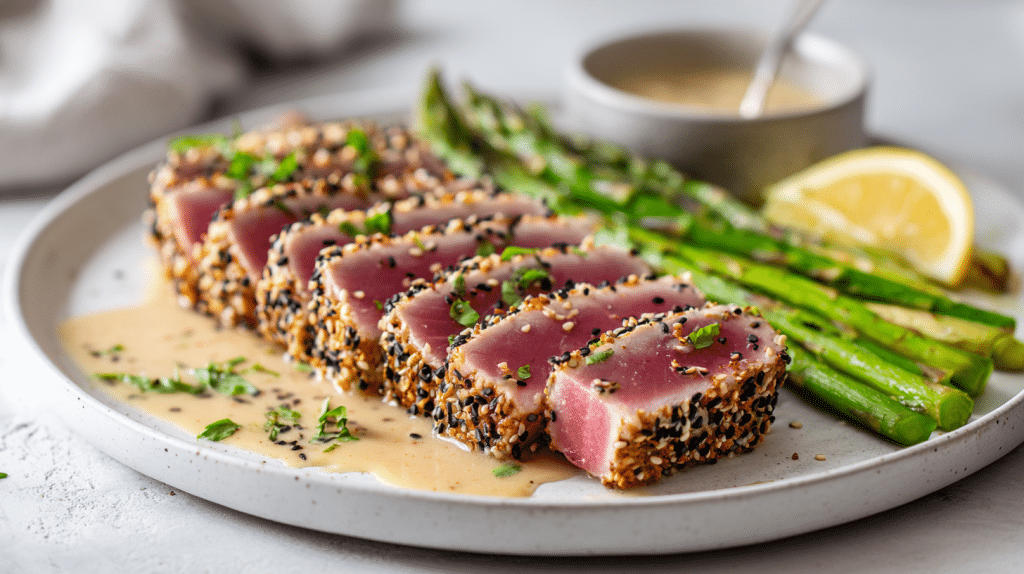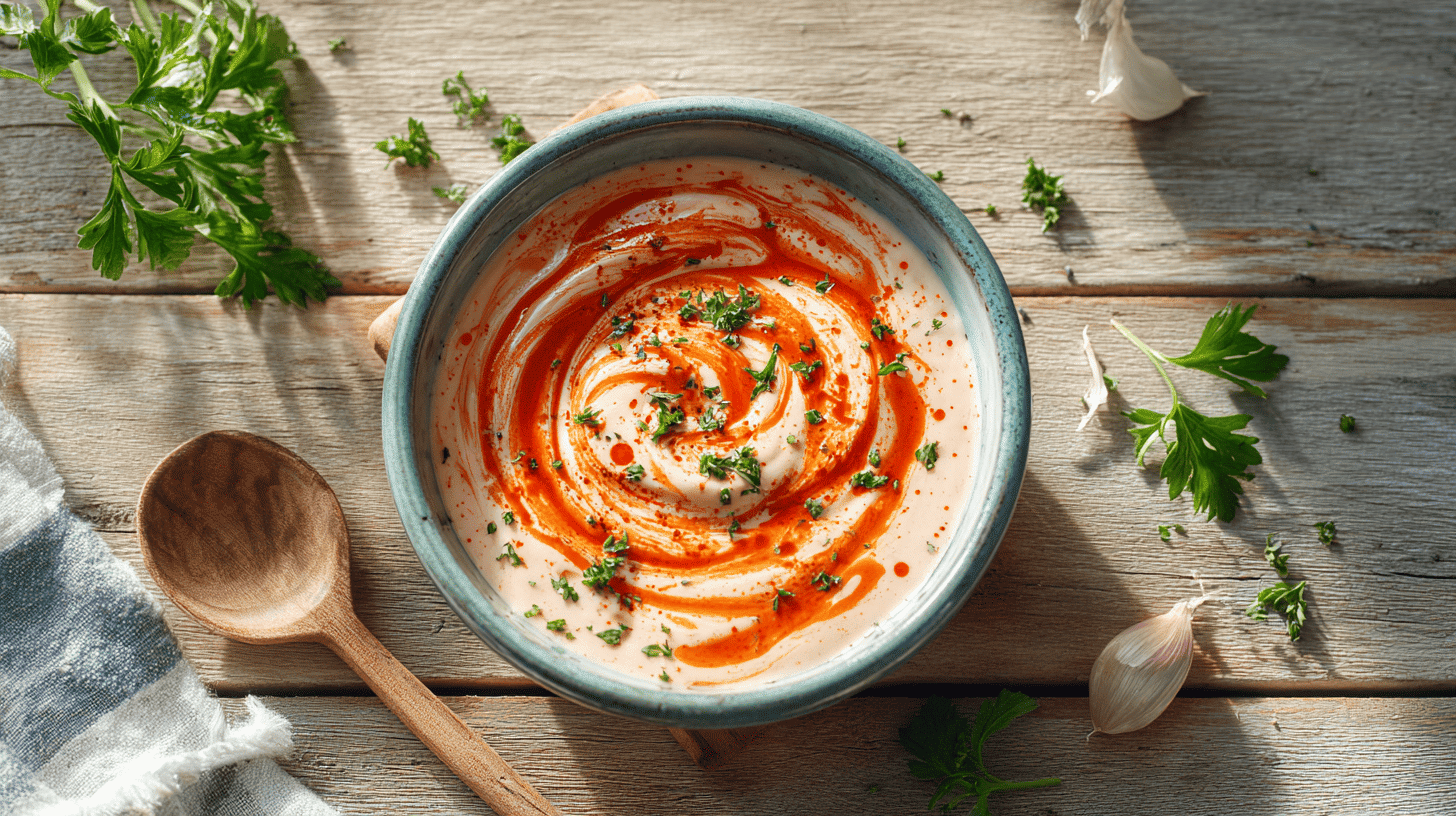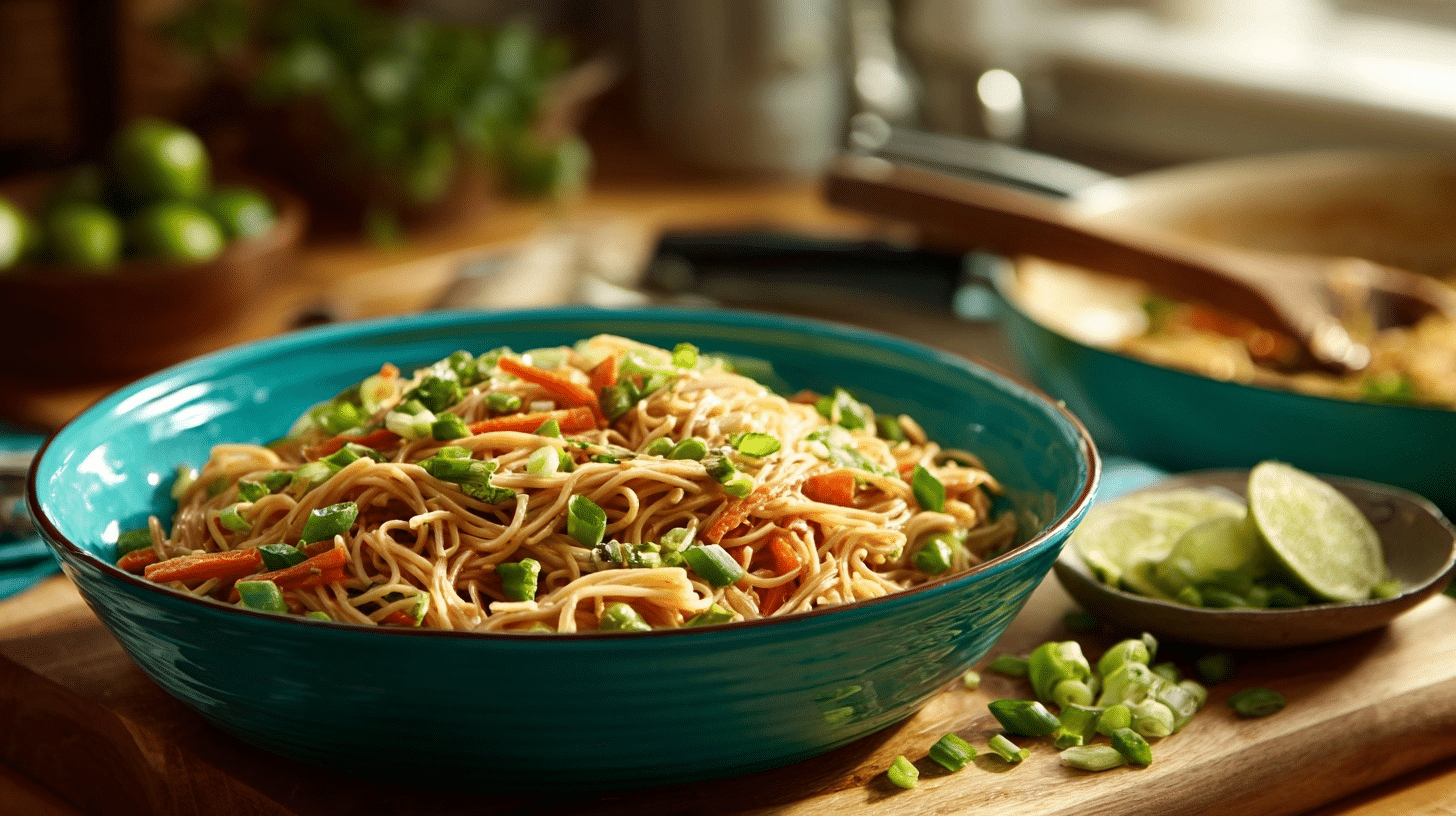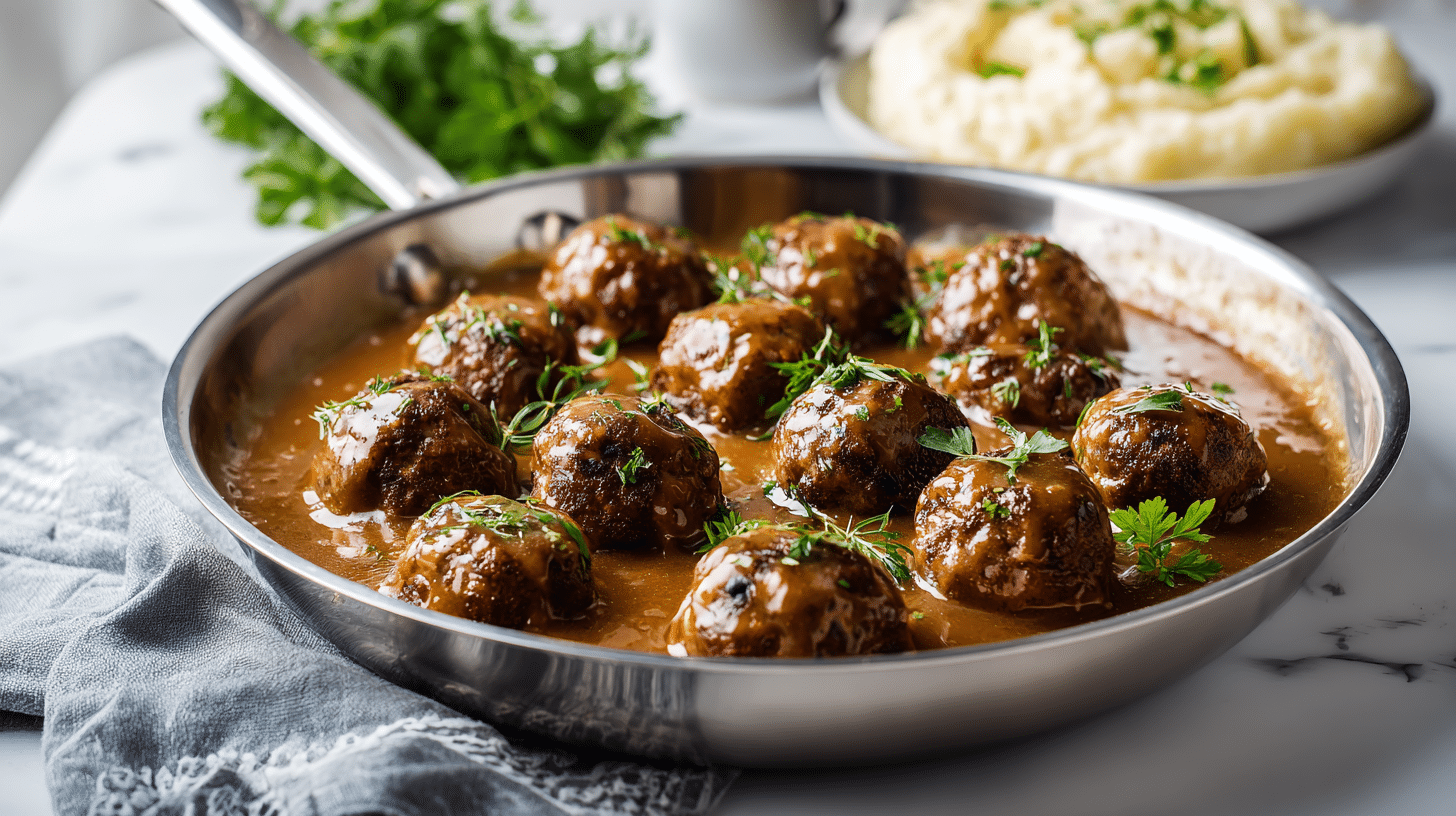Did you know that one serving of tuna steak packs more protein than most other foods while having fewer calories than a slice of pizza?
Most people think eating healthy means sacrificing taste or feeling hungry. But what if you could fuel your muscles, boost your brain power, and support your heart health all with one delicious meal?
Tuna steak delivers an incredible 25+ grams of muscle-building protein, heart-healthy omega-3s, and essential vitamins – all for just 120 calories per serving.
Ready to learn why nutrition experts call tuna steak a “superfood of the sea”? Let’s go into exactly what makes this fish so powerful for your health.
The Nutrition Breakdown: What’s Actually Inside
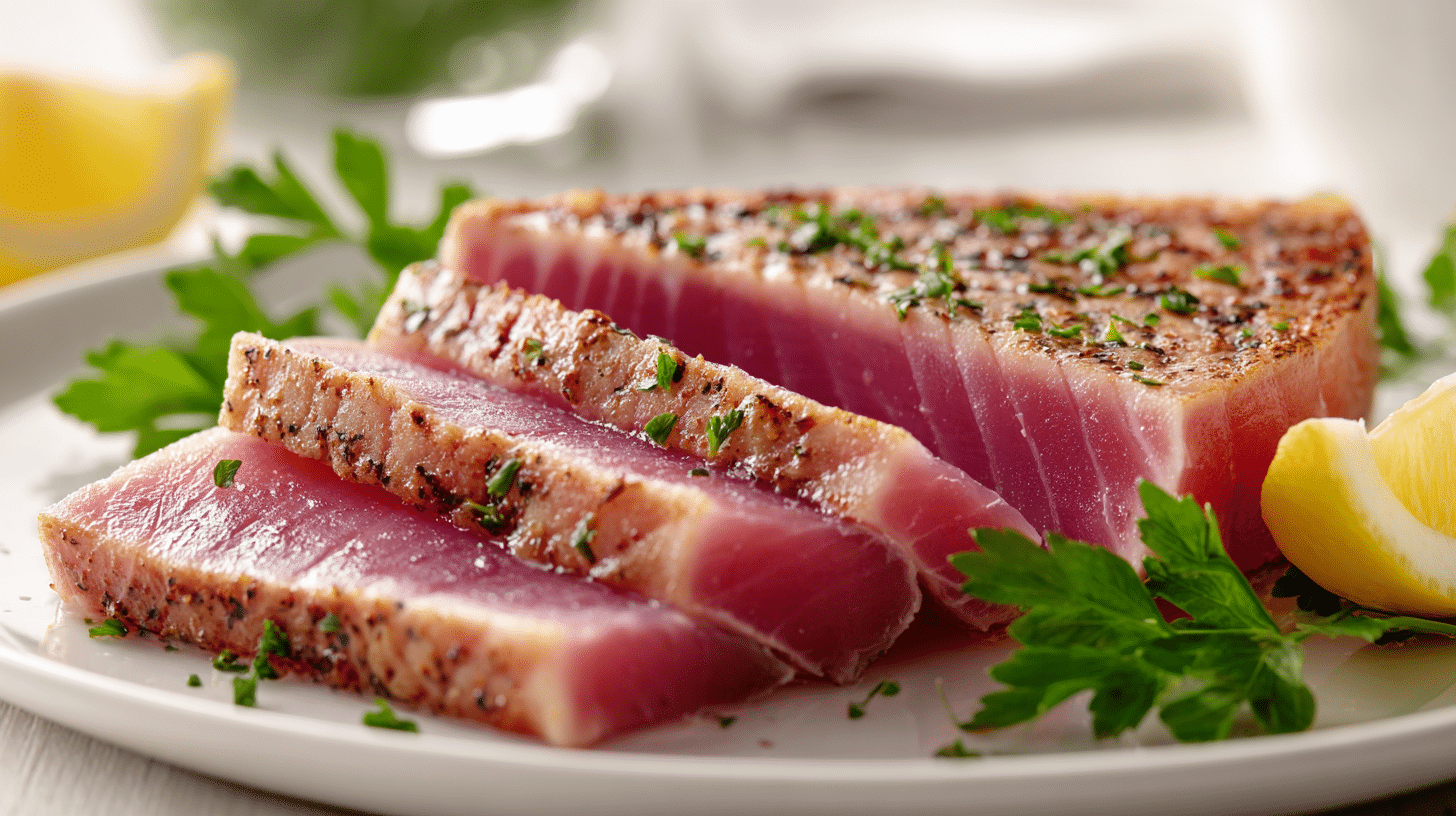
Let’s start with the basics. A typical tuna steak serving (about 100 grams, or roughly the size of your palm) contains some pretty impressive numbers that might surprise you.
1. Low-Calorie Champion
Most tuna steaks contain only 110-130 calories per 100 grams – that’s half the calories of a chicken breast. This makes it perfect for weight management without sacrificing satisfaction.
You get maximum nutrition with minimal calories, making every bite count toward your health goals.
2. Protein Powerhouse
Tuna delivers an impressive 22-29 grams of complete protein in each 100-gram serving.
Complete protein means it has all the essential amino acids your muscles need to grow and repair. That’s more high-quality protein per bite than almost any other food you can find.
3. Heart-Healthy Fats
Though tuna contains only 1-5 grams of fat per serving, it’s the good kind your body craves.
Most of this fat comes from omega-3 fatty acids (EPA and DHA) that doctors recommend for heart health. These healthy fats also boost brain function and fight inflammation throughout your body.
4. Zero Carb Wonder
Here’s something amazing – tuna steak contains absolutely zero carbohydrates. This makes it ideal for low-carb diets and anyone wanting sustained energy from protein. Your body gets clean fuel without any blood sugar spikes or crashes.
Complete Nutrition Breakdown: What’s Inside Your Tuna Steak
Here’s everything you get in a 100-gram serving of tuna steak:
| Nutrient | Amount | Key Benefits |
|---|---|---|
| Calories | 110-130 kcal | Low-calorie protein source |
| Protein | 22-29g | Complete amino acids for muscle building |
| Total Fat | 1-5g | Heart-healthy omega-3 fatty acids |
| Carbohydrates | 0g | Perfect for low-carb diets |
| Vitamin B12 | 43% DV* | Red blood cell formation, nerve function |
| Selenium | 92% DV | Antioxidant protection for cells |
| Niacin (B3) | 53% DV | Energy production, healthy skin |
| Vitamin B6 | 26% DV | Brain function, mood regulation |
| Potassium | 444mg | Heart health, blood pressure control |
| Phosphorus | 254mg | Strong bones and teeth |
| Magnesium | 50mg | Muscle and nerve function |
| Iron | 1.0mg | Oxygen transport in blood |
*DV = Daily Value based on 2,000-calorie diet
Wild-Caught vs. Farm-Raised: Understanding the Difference
When shopping for tuna, you’ll see these two options – here’s how they actually compare:
| Wild-Caught Tuna | Farm-Raised Tuna |
|---|---|
| Swims freely in the ocean | Lives in controlled ocean pens |
| Eats natural diet (fish, squid, crustaceans) | Fed specially formulated feed |
| Slightly higher omega-3 content | More consistent fat levels |
| Usually more expensive | Often more affordable |
| Less predictable availability | Year-round consistent supply |
Bottom line: Both provide excellent nutrition – choose based on your budget and taste preferences, not nutritional worries.
How Cooking Methods Affect Nutrition
The way you prepare your tuna steak can change its nutritional profile, though usually not dramatically.
- Raw Tuna: Keeps all vitamins, minerals, and healthy fats completely intact. Calorie count stays exactly as nature intended at around 120 calories per serving.
- Grilled Tuna: High heat may reduce some vitamins slightly, but protein and omega-3s stay strong. Adding oil or marinades increases calories by 40-50 per tablespoon used.
- Seared Tuna: Quick cooking on the outside while keeping the center raw preserves most nutrition. Calorie count remains very close to raw tuna with minimal changes.
- Pan-Fried or Deep-Fried: Significantly increases calories due to added cooking oils. Deep-fried tuna can jump from 120 to 200-300 calories per serving.
Simple Healthy Garlic-Lemon Seared Tuna Steak
Looking for a quick meal that’s as nutritious as it is delicious? This recipe highlights tuna steak’s natural flavor while boosting it with fresh lemon, garlic, and heart-healthy olive oil.
|
Ingredients (2 servings):
|
Instructions:
- Pat tuna steaks dry with paper towels and season both sides with salt and black pepper.
- Heat olive oil in a skillet over medium-high heat.
- Add minced garlic and sauté for 30 seconds until fragrant.
- Place tuna steaks in the pan and sear for 1–2 minutes per side (for medium-rare; adjust if you prefer more cooked).
- Squeeze fresh lemon juice and drizzle soy sauce (if using) over the steaks just before removing from the heat.
- Garnish with chopped parsley or cilantro and serve immediately with a side of steamed veggies or a light salad.
Nutrition Per Serving (approx.):
| Nutrient | Amount |
|---|---|
| Calories | ~220 kcal |
| Protein | 27 g |
| Healthy Fats | 8 g |
| Carbohydrates | 1 g |
Disclaimer: Nutrition values are approximate and may vary depending on tuna cut, cooking method, and additional ingredients used.
Source Differences and What to Expect

Different brands and sources of tuna can have slightly varying nutritional profiles, but the differences are usually small.
|
Yellowfin Tuna: This is the most common type you’ll find in stores. It typically contains around 120 calories and 25 grams of protein per 100 grams. Ahi Tuna: Often considered a premium variety, ahi tuna has similar nutrition to yellowfin but might be slightly higher in certain minerals due to where it’s caught. Store Brands: Whether you buy tuna from Tesco, Trader Joe’s, or your local grocery store, the nutritional content remains fairly consistent. Most will provide 110-130 calories and 22-29 grams of protein per serving. |
Health Benefits: Why Your Body Loves Tuna
Eating tuna steak regularly can provide several important health benefits:
- Heart Health: The omega-3 fatty acids in tuna help reduce inflammation in your blood vessels, lower triglycerides, and may help prevent heart disease.
- Muscle Building and Repair: With its high-quality complete protein, tuna provides all the building blocks your muscles need to grow stronger and recover after exercise.
- Brain Function: The combination of omega-3s, B vitamins, and selenium supports cognitive function, memory, and may help protect against age-related mental decline.
- Weight Management: High protein content helps you feel full and satisfied while keeping calories relatively low. This can make it easier to maintain a healthy weight.
- Immune System Support: The selenium and other antioxidants in tuna help keep your immune system strong and ready to fight off infections.
Making Tuna Part of Your Healthy Diet
Tuna steak is like a nutritional all-star player. It delivers high-quality protein, heart-healthy fats, and essential vitamins and minerals while keeping calories in check.
When grilled with a squeeze of lemon, seared with sesame seeds, or even raw in a poke bowl, you’re giving your body premium fuel.
Think of tuna steak as an investment in your health – one that happens to taste amazing too.
With its impressive nutritional profile and versatility in the kitchen, it’s no wonder that health-conscious people around the world have made tuna steak a regular part of their meal planning.
What’s your favorite way to prepare tuna steak? Drop a comment below and share your go-to recipe or cooking method – we’d love to hear how you’re making this nutritional powerhouse part of your healthy lifestyle!


